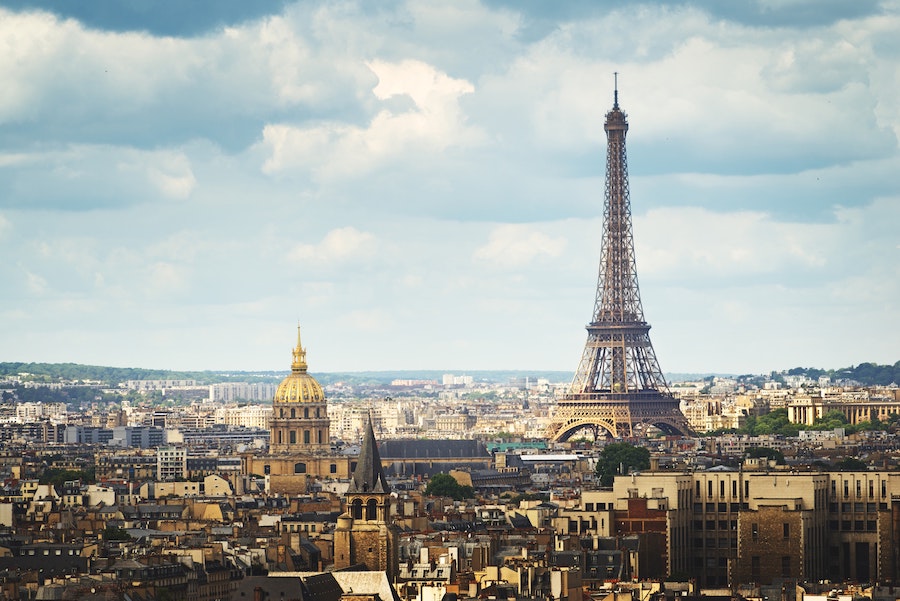The Eiffel Tower at 130 – the symbol of France that was initially scorned by high society
It’s quite remarkable how many of the world’s most iconic monuments were originally designed to be temporary. In London alone, there’s the London Eye, which opened with a five-year lease, and the Millennium Dome, which was meant to be promptly converted into a football stadium.
But for influence and acclaim, both are dwarfed by the bare, metallic beauty and sheer skyline presence of the Eiffel Tower, first opened in 1889 with an intended lifespan of just two decades.
The pet project of engineer Gustave Eiffel, the ‘Iron Lady’ turns 130 this year, and looks just as coldly majestic as she did receiving her final rivet. We combed through the many quirks and calamities that made this monument the icon it is today…
The pride of Barcelona
As a national symbol of Frenchness, the Eiffel Tower is an unnatural choice. For starters, it’s only 130 years old – a toddler by the standards of French heritage – though it was at least commissioned to mark the centenary of the French Revolution and the storming of the Bastille.

It was opened not by a proud Frenchman, but by the then Prince of Wales (later Edward VII), and the Tower spent eight years of its life as a glorified billboard, emblazoned on three sides with the word ‘Citroen’.
Initially, it wasn’t even meant to be built in France. Though designed by French designers and built by French builders, the project was first offered to the Catalan city of Barcelona. Only when that offer had been rejected did Paris pick up what Spain had spurned.
An iron giant
A Herculean project by contemporary standards, the Eiffel Tower was commissioned by competition. Initially the brainchild of Maurice Koechlin and Émile Nouguier, two of M. Eiffel’s senior architects, it was unanimously chosen ahead of a host of other entries to commemorate the revolution at the World Fair in 1889.
At over 300-metres, the tower would replace the Washington Monument as the tallest building in the world (a record it held for more than 40 years), and its 18,000 metal parts would weigh more than 111,000 tons. In today’s money, the cost totalled roughly £27.5 million.

(L) Gustave Eiffel and (R) an early photograph of the Eiffel Tower (PA)
Wrought from pudding iron (not steel, as is commonly believed), the Tower grows and shrinks by some six inches in different temperatures, and was deliberately designed to sway up to seven inches in the wind.
Construction took place under a microscope, and every pause led to sensationalised catastrophising in the press. ‘Eiffel Suicide!’ read one newspaper, while another opted for, ‘M. Eiffel has gone mad: He has been confined to an asylum’.

He hadn’t, and he wasn’t. After two years of meticulously complex metalwork, the new Tower was officially inaugurated on March 31, 1889. A tricolour flag was raised from the top deck, and on the first level a troop of cannon fired a 25-gun salute.
A controversial commission
Even before the Tower was finished, the French intelligentsia despised it. Writer and art critic Joris-Karl Huysmans called it a “hole-riddled suppository” and “a carcass waiting to be fleshed out”, while Parisian poet François Coppée declared it to be “a mast of iron gymnasium apparatus – incomplete, confused, and deformed”.
A movement opposing the Tower emerged, the so-called ‘Artists against the Eiffel Tower’, including Charles Gounod and the younger Alexandre Dumas. Among them too was renowned novelist Guy de Maupassant, who reportedly hated the Tower so much he would eat his meals in the restaurant at the tower’s base – the one place in Paris he didn’t have to look at it.

There followed a petition to the Ministry of the Interior. “For 20 years,” it read, “we shall see spreading across the whole city, a city shimmering with the genius of so many centuries, we shall see spreading like an ink stain, the odious shadow of this odious column of bolted metal.”
As it turned out, 20 years was just the start, and the Tower has long-outlived the letter’s signatories.
Eiffel’s big beast
To be fair to the naysayers, their critiques were not without cause. M. Eiffel intended his Tower to represent “not only the art of the modern engineer, but also the century of industry and science in which we are living”, and the resulting monolith stuck like a knife out of the refined Parisian skyline.
Among the general public, however, the Tower was a smash and visitors flocked in their millions. The three accessible levels hosted a patisserie, an observation deck, a post office flogging panoramic postcards, and an office of French newspaper Le Figaro peddling a special souvenir edition.

Though some sceptics weren’t swayed by its stately splendour, city officials soon found another use for the Eiffel Tower – as a giant public radio mast. 1909 arrived, the lease ran out, and the Tower stayed standing.
A spoil of war
Come the First World War, a transmitter was attached to the Tower’s top, jamming German radio communications. The effect on the German advance was immediate, and the gadget contributed to the subsequent Allied victory at the Battle of the Marne.
Towards the end of the war, the listening post was responsible for the monitored messages that led to the capture and execution of infamous spy Mata Hari.

After the Nazi occupation in World War Two, the French cut the cables controlling the Tower’s lifts, to deny the invaders access to the radio apparatus. Purportedly, this was also so that if Hitler wanted to climb the Tower, he’d have to climb 1,665 steps.
Never a fan of Paris or its centrepiece, Hitler ordered the Eiffel Tower destroyed as the Allies approached in 1944, along with large swathes of the city. Fortunately, the governing general refused.
The emergence of an icon
The Eiffel Tower had proven its worth: By the late-1940s it had been a radio tower, an advert and a prisoner-of-war, and had gradually ceased being a subject of ridicule.
In 1964, the Tower achieved a great symbolic landmark – it was officially named an historic monument by the Minister for Cultural Affairs – while tourist numbers kept spiralling up towards the stratosphere.
It probably helped that the Tower was not short on strangeness and intrigue. In 1912, inventor Franz Reichelt died leaping from the Tower to demonstrate a parachute of his own design, while the structure was successfully “sold” for scrap metal by famous conman Victor Lustig in the 1920s.

The Tower’s greatest design change since its days as an advertising hoarding came in 1985, with the installation of a brand new set of illuminations – including 20,000 bulbs, 336 projectors, and 40km of electrical cable, taking 25 climbers five months to fully install.
Technically, photographing the illuminations is illegal, as the government ruled that they were ‘artwork’ and therefore copyrighted. The law is not rigorously enforced.
Perhaps most unusually of all, in 2007 the monument was unwittingly married to former professional archer and noted ‘object-sexual’ Erika Eiffel (nee LaBrie), in a commitment ceremony at the base. The pair have since separated, after Tower staff told her to stay away.
A byword for tourism
Today, the tower is synonymous with Paris, and an undisputed ratings juggernaut. Oft-imitated, famous replicas include Blackpool Tower (the oldest), and the Las Vegas Eiffel Tower Experience (the biggest). Seven million visitors gaze on the original every year, 75% of them from overseas, making it the most visited paid-for monument in the world.
A giant hunk of metal stretching towards the sky, today’s Eiffel Tower looks very much the same as it did on debut in 1889. It is, however, a great deal less divisive.
The Press Association
Latest posts by The Press Association (see all)
- World Penguin Day: Test your knowledge with our penguin-themed quiz - April 23, 2024
- Kate’s new photo of Louis released to celebrate prince’s sixth birthday - April 23, 2024
- Alan Titchmarsh: Slugs are never going to be my friends - April 23, 2024
- Prince Louis celebrates sixth birthday - April 23, 2024
- Special episode of Planet Earth III to be narrated by schoolchildren - April 22, 2024






















